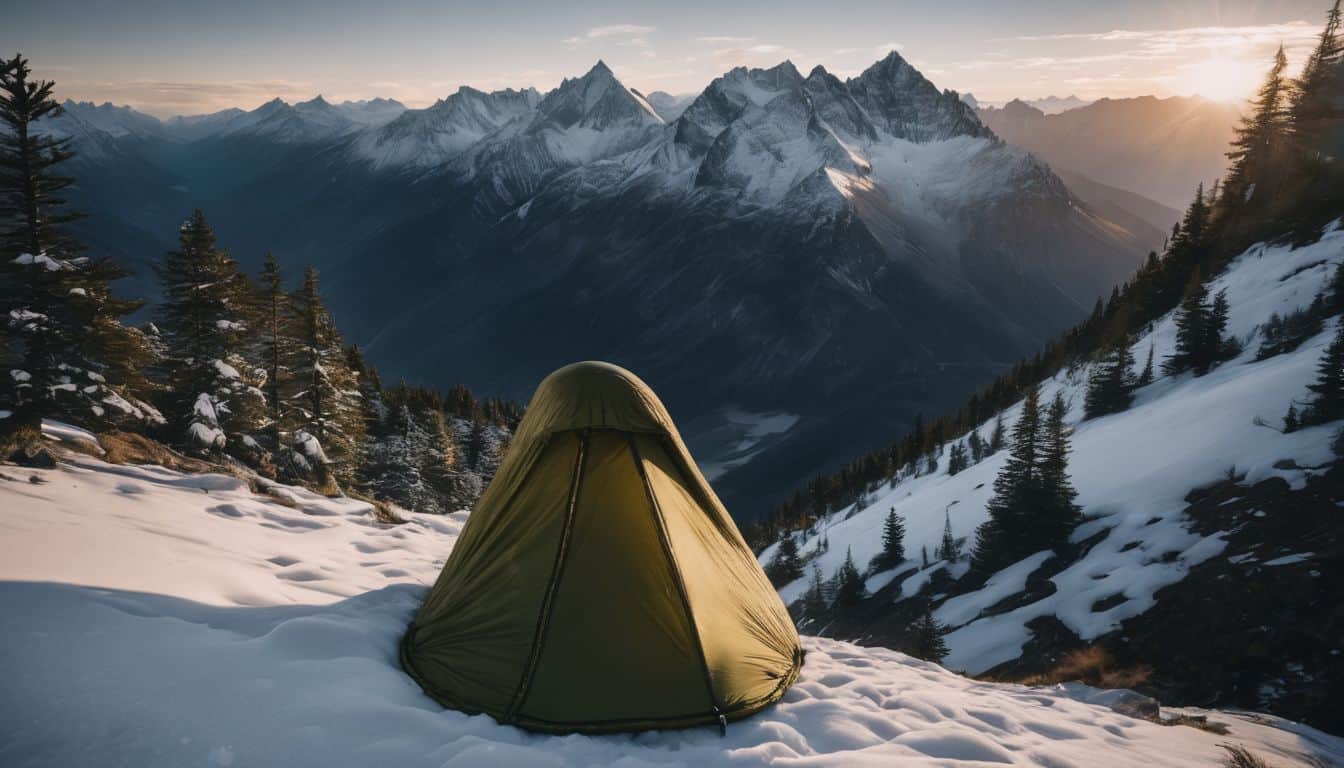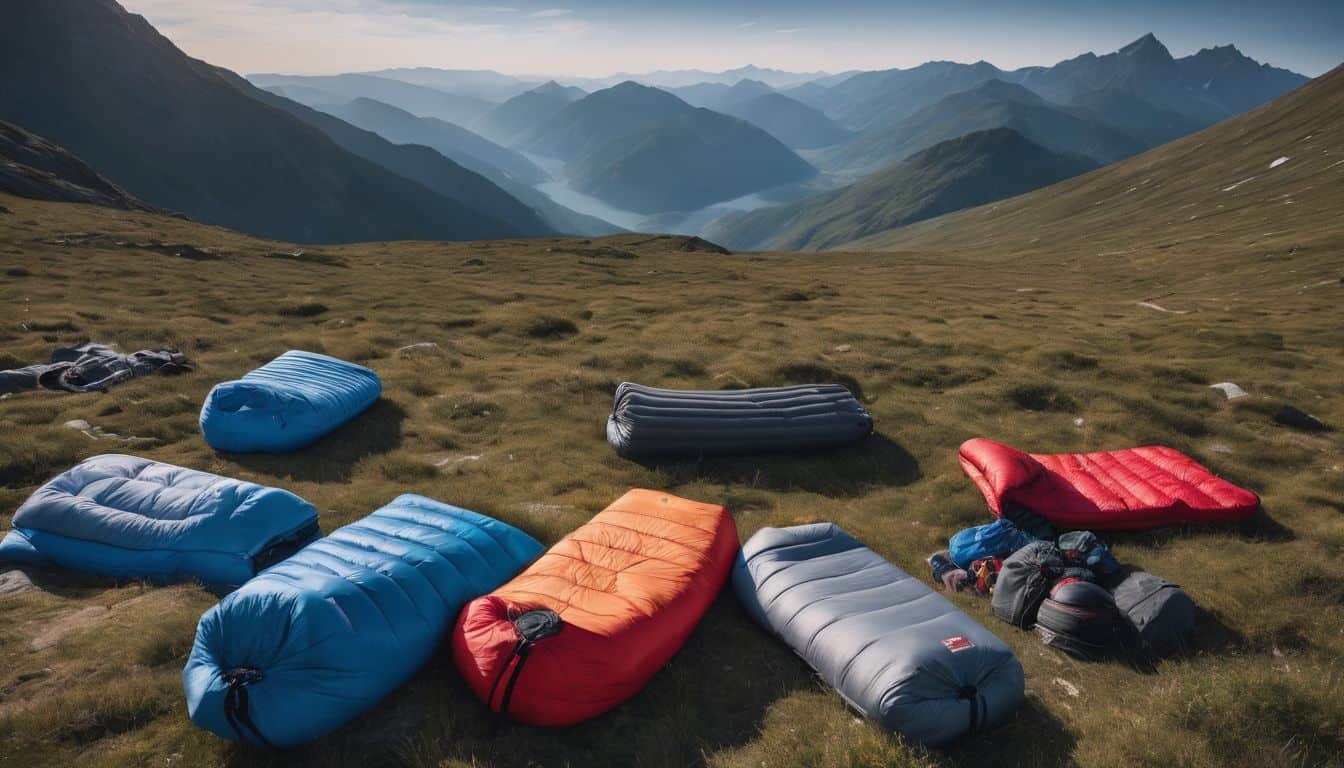Selecting the right sleeping bag is crucial for a comfortable and safe camping experience. Whether you’re cabin camping or engaging in more rugged pioneer camping, your sleeping bag can make or break your outdoor adventure. This comprehensive guide will help you navigate the complex world of sleeping bags to find the perfect one for every season.

Understanding Temperature Ratings
Sleeping bags are typically categorized into four main types:
| Season | Temperature Range | Sleeping Bag Type |
|---|---|---|
| Summer | Above 35°F (2°C) | Lightweight and breathable bags |
| 3-Season | 10°F to 35°F (-12°C to 2°C) | Versatile bags for spring, summer, and fall |
| Winter | 10°F (-12°C) and below | Heavily insulated bags for cold conditions |
| Extreme | Varies greatly, extreme conditions | Specialized bags designed for expeditions |
The EN Temperature Rating System provides standardized ratings, but remember that personal factors like metabolism and sleeping attire can affect your comfort level. This system offers two key ratings: the Comfort rating (for an average woman) and the Lower Limit rating (for an average man). The Comfort rating indicates the lowest temperature at which a cold sleeper will remain comfortable, while the Lower Limit suggests the lowest temperature at which a warm sleeper will be comfortable.
However, these ratings are just guidelines. Your personal comfort can be influenced by factors such as your body type, metabolism, and what you wear to sleep. Additionally, altitude, humidity, and wind can impact how warm you feel. It’s often wise to choose a bag rated for slightly lower temperatures than you expect to encounter, giving yourself a buffer for unexpected weather or personal comfort needs. Remember, it’s easier to vent a too-warm bag than to warm up in one that’s not insulating enough for the conditions.
Insulation Types
Down Insulation
Down offers excellent warmth-to-weight ratio and compressibility. Look for higher fill power (600-900) for better insulation. Consider ethical down certifications like RDS or TDS. Down insulation is derived from the soft undercoating of geese or ducks and is prized for its exceptional loft and ability to trap heat. The fill power indicates how many cubic inches one ounce of down can fill; higher numbers mean better insulation and lighter weight. While down is superior in dry conditions, it loses its insulating properties when wet and takes longer to dry. Ethical certifications ensure the down is sourced responsibly, addressing animal welfare concerns.
Synthetic Insulation
Synthetic insulation performs better in wet conditions and is generally less expensive, though it’s bulkier and heavier than down. Made from polyester fibers, synthetic insulation retains most of its insulating properties when damp and dries quickly. It’s also hypoallergenic and easier to clean. Modern synthetic insulations are continually improving, with some high-end options approaching the warmth-to-weight ratio of down. Synthetic bags are often the preferred choice for damp climates or for campers who prioritize easy care and affordability over minimal pack size and weight.
| Aspect | Down Insulation | Synthetic Insulation |
|---|---|---|
| Weight | Lighter than synthetic options. | Heavier, which may affect portability. |
| Compressibility | Highly compressible for easy packing. | Less compressible, takes up more space. |
| Longevity | Outperforms synthetic in durability if properly cared for. | Tends to break down faster over time. |
| Price | More expensive due to superior qualities. | Generally more affordable. |
| Warmth | Exceptional warmth-to-weight ratio. | Provides insulation even when wet but less warmth per ounce. |
| Performance in Wet Conditions | Loses insulating properties when wet, though water-resistant treatments are available. | Retains warmth when wet, making it suitable for damp climates. |
Sleeping Bag Shapes
The shape of your sleeping bag can significantly impact your comfort and warmth:
- Rectangular: Roomy and versatile, these bags offer the most space for movement and can often be fully unzipped to use as a blanket. They’re ideal for car camping or indoor use where space and weight aren’t concerns. However, the extra space can reduce thermal efficiency.
- Mummy: Shaped to contour the body, mummy bags are efficient for heat retention and lighter weight. They taper from the shoulders to the feet, minimizing the amount of air that needs to be heated. While they’re the go-to choice for backpackers and cold-weather campers, some users find them restrictive.
- Semi-rectangular/Barrel: A compromise between comfort and efficiency, these bags offer more room than mummy bags but better heat retention than rectangular ones. They’re a good all-around choice for various camping situations.
- Double bags: Ideal for couples, these bags are essentially two sleeping bags that can zip together. They allow shared body heat but can often be separated for individual use. Some models even offer different insulation levels on each side to accommodate different temperature preferences.
When choosing a shape, consider your camping style, sleeping habits, and the typical climate you’ll be camping in. Remember that a bag that keeps you warm but prevents you from sleeping comfortably due to its shape isn’t ideal.
Here’s an expanded version of those sections:
Sizing Your Sleeping Bag
Choose a length that allows your feet to push lightly against the bottom without compressing the insulation. Consider width and girth for comfort, especially if you’re a restless sleeper. A bag that’s too long will have excess space to heat, reducing efficiency, while a bag that’s too short will compress the insulation, creating cold spots. For width, ensure you have enough room to move comfortably without excess space. Some bags offer different lengths and widths to accommodate various body types. If you’re between sizes, it’s often better to size up for comfort.
Additional Features to Consider
- Shell materials with DWR (Durable Water Repellent) treatment for water resistance help protect the insulation from moisture.
- Well-designed hoods are crucial for heat retention, as much heat is lost through the head. Look for adjustable hoods that can be cinched snugly around your face.
- Quality zippers with anti-snag features prevent frustrating snags and potential damage to the bag. Two-way zippers offer additional ventilation options.
- Draft collars and tubes along the zipper prevent cold air from seeping in and warm air from escaping, significantly enhancing the bag’s thermal efficiency.
Sleeping Bag Accessories
Enhance your sleeping bag’s performance with:
- Sleeping bag liners add extra warmth (up to 15°F) and keep your bag clean, extending its life. They’re also easy to wash after each trip.
- Compression sacks are essential for reducing the packed size of your bag, especially important for backpacking. However, avoid storing your bag compressed long-term.
- Proper storage solutions, like large cotton or mesh bags, help maintain loft by allowing the insulation to remain uncompressed during storage.
Matching Your Bag to Your Activity
Consider the weight and packed size for backpacking trips, where every ounce counts. For car camping, comfort can take precedence over weight, allowing for roomier, heavier bags. Altitude and climate should also influence your choice; higher altitudes and more extreme climates generally require warmer, more technical bags. For varied activities, consider a versatile 3-season bag with the option to add a liner for colder trips.
Care and Maintenance
Proper cleaning and storage are crucial for longevity. Always store your bag uncompressed in a cool, dry place to maintain loft and insulating properties. Deal with moisture promptly to prevent mold and mildew. For cleaning, follow the manufacturer’s instructions carefully; down bags often require special care and may need professional cleaning. After each trip, air out your bag thoroughly before storage. Avoid compressing your bag for long periods, as this can damage the insulation over time.
Budget Considerations
While it’s tempting to opt for cheaper options, investing in a quality sleeping bag can save money in the long run and provide better comfort and durability.
Remember, your sleeping bag is a crucial piece of gear that can significantly impact your outdoor experience. Take the time to choose wisely based on your specific needs and camping style.
For those who can’t bear to be without their favorite shows even in the wilderness, check out our guide on how to watch TV while camping. However, don’t let screen time detract from the natural beauty around you!
By considering all these factors, you’ll be well-equipped to choose the perfect sleeping bag for every season, ensuring comfortable and safe camping adventures year-round.

Leave a Reply